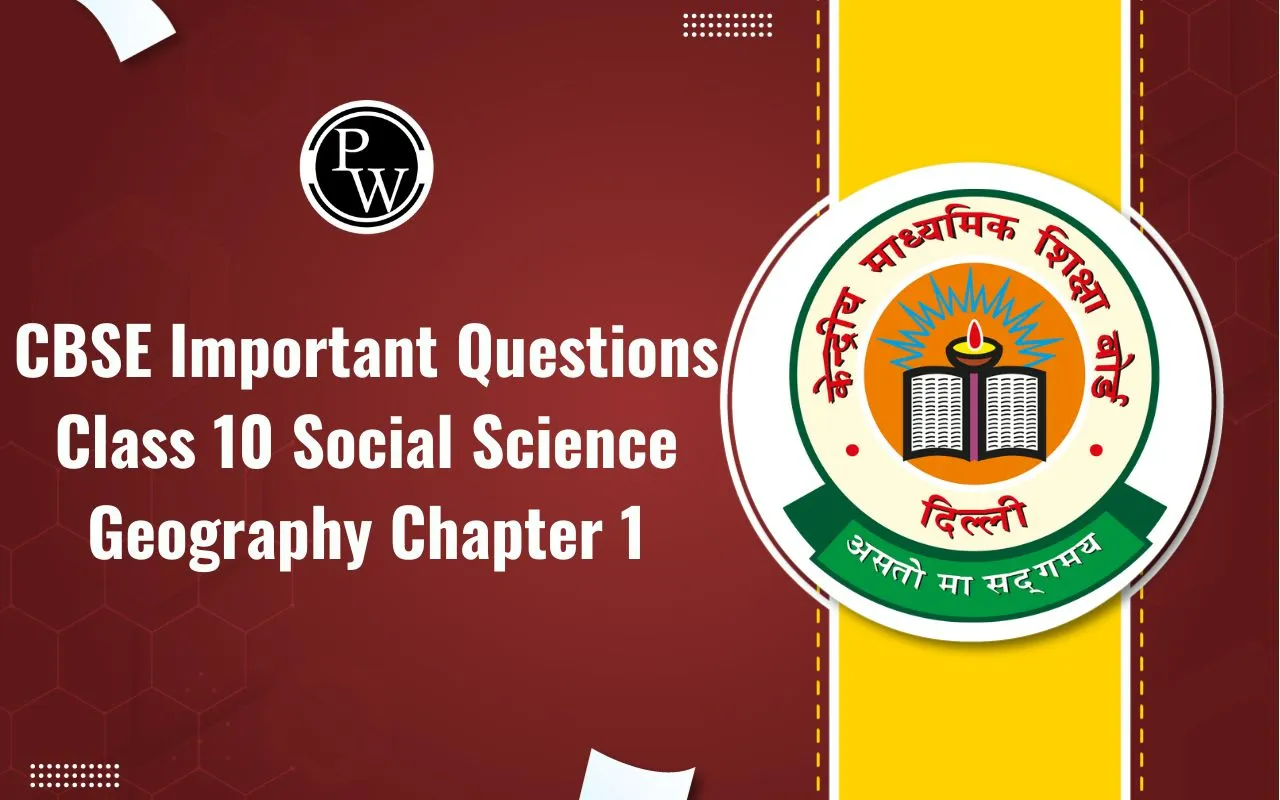
CBSE Class 10 Science Notes Chapter 5: The classification of elements has been one of the most fascinating areas of discovery in chemistry. When Dmitri Mendeleev first introduced his periodic table in 1869, it seemed to offer order and logic to the diverse array of known elements despite some gaps in knowledge.
In this blog post, we will break down the key ideas behind periodic classification of elements that allows us to intelligently arrange all 118 known elements based on their properties. In CBSE Class 10 Science Notes Chapter 5, students learn the basics of Mendeleev's periodic table, how it arranges elements based on atomic structure and properties, and how this organization allows for new insights and applications.CBSE Class 10 Science Notes Chapter 1
We will explain the significance of atomic number and the recurring trends observed in elements when periodic tables are analyzed row by row. By the end, our aim is for you to walk away with a clear conceptual grasp of periodic trends and feel confident in your preparation for questions related to periodic classification that often feature in CBSE class 10 science exams.CBSE Class 10 Science Notes Chapter 5 Overview
The systematic organization and grouping of chemical elements based on their characteristics is referred to as the periodic classification of elements. Establishing a solid foundation in Chemistry necessitates a thorough understanding and memorization of the periodic table, as it serves as a fundamental tool in various units. Prior to delving into the specifics of the periodic table, it is essential to grasp its formation.CBSE Class 10 Science Notes Chapter 2
CBSE Class 10 Science Notes Chapter 5 provides a comprehensive overview of all the key concepts and theories in physics. Delve into topics such as light reflection, refraction, human eye, electricity, magnetic effects of electric current, and more. These notes serve as a valuable resource for students looking to strengthen their understanding of these fundamental concepts in science. But remember, reading these notes is only the first step towards success. It is important to put them into practice and continue reviewing them regularly to really solidify your knowledge. And for that, we highly recommend checking out Physics Wallah notes.CBSE Class 10 Science Notes Chapter 3
CBSE Class 10 Science Notes Chapt er 5
Here is a summary of CBSE Class 10 Science Chapter 5: "Periodic Classification of Elements":1. Introduction:
- The periodic table is a systematic arrangement of elements based on their atomic number, electron configuration, and recurring chemical properties.
- The historical development of the periodic table involves contributions from scientists like Mendeleev and Moseley.
2. Mendeleev's Periodic Table:
- Dmitri Mendeleev organized elements based on atomic masses.
- Gaps were left for undiscovered elements, and this arrangement allowed predictions of properties for yet-to-be-discovered elements.
3. Modern Periodic Table:
- Henry Moseley's work led to the modern periodic table, which organizes elements based on atomic numbers.
- Periods (horizontal rows) and groups (vertical columns) are explained, providing a systematic arrangement.
4. Trends in the Periodic Table:
- Atomic size decreases across periods and increases down groups.
- Ionization energy generally increases across periods and decreases down groups.
- Electronegativity follows a similar trend, increasing across periods and decreasing down groups.
- Metallic character decreases across periods and increases down groups.
5. Groups and Periods:
- Groups represent vertical columns with similar chemical properties.
- Periods represent horizontal rows with an increasing number of electron shells.
6. Noble Gases:
- Noble gases in Group 18 are inert and chemically stable due to their full outer electron shells.
7. Electronic Configuration:
- The relationship between electronic configuration and the periodic table is crucial for understanding an element's chemical behavior.
8. Properties of Metals and Non-Metals:
- Metals, found on the left side, generally have high melting points, conductivity, and malleability.
- Non-metals, found on the right side, exhibit opposite properties.
- Metalloids share characteristics of both metals and non-metals.
9. Reactivity of Elements:
- Alkali metals (Group 1) exhibit increased reactivity down the group.
- Halogens (Group 17) are highly reactive non-metals.
10. Significance of the Periodic Table:
- Predicting properties of elements and their behavior in chemical reactions.
- Identifying trends in physical and chemical behavior.
11. Lanthanides and Actinides:
- These series of elements are placed at the bottom of the periodic table, and they are transition metals with unique properties.
12. Periodic Table and Electronic Configuration:
- Understanding the electronic configuration of elements helps correlate with their positions in the periodic table.
- Representative elements in Groups 1, 2, and 13 to 18 show diverse properties.
13. Application in Chemistry:
- The periodic table is practically useful in various fields of chemistry.
- Predicting reactions and understanding chemical behavior become more efficient with its application.
14. Importance in Daily Life:
- Elements from the periodic table have diverse applications in everyday life.
- The periodic table is fundamental to understanding the materials we encounter daily.
15. Revision and Notes:
- The summary emphasizes key concepts for effective revision.
- Physics Wallah Class 10 Science Chapter 5 Notes are designed to assist in preparation.
CBSE Class 10 Science Notes Chapter 5 PDF
Having a thorough understanding of the periodic classification of elements is crucial for excelling in CBSE Class 10 Science. With the help of these notes, students can not only grasp the concepts quickly but also retain them in the long run. The PDF download option makes it easier for students to access these notes anytime and anywhere. we highly recommend Physics Wallah notes, as they have been curated by a team of experienced teachers who have a clear understanding of curriculum requirements and focus on simplifying complex topics for students. So don't wait any longer and start using these notes to boost your learning and excel in your exams. Remember, knowledge is power, and with these notes, you can empower yourself to achieve your academic goals. So download the CBSE Class 10 Science Notes Chapter 5 Periodic Classification of Elements now because let's face it, Physics Wallah notes are simply the best.CBSE Class 10 Science Notes Chapter 5 Important Questions
Here are some important questions related to CBSE Class 10 Science Chapter 5: "Periodic Classification of Elements": What is the significance of the Modern Periodic Table? Answer: The Modern Periodic Table is significant as it arranges elements based on their atomic number, reflecting the number of protons in the nucleus. This arrangement reveals the periodic trends in properties and helps predict the behavior of elements. Explain how elements are arranged in a period. Answer: Elements in a period are arranged in increasing order of atomic number. As you move across a period from left to right, the atomic size generally decreases, and properties change gradually. Why do elements in the same group have similar chemical properties? Answer: Elements in the same group have similar chemical properties because they have the same number of valence electrons. Similar outer electron configurations result in analogous chemical behavior. Describe the trends in atomic size across a period and down a group. Answer: Atomic size decreases across a period from left to right due to increased effective nuclear charge. Down a group, atomic size increases due to the addition of energy levels. What is the relationship between the number of valence electrons and the group number in the Periodic Table? Answer: The group number represents the number of valence electrons in the outermost shell of an element. Elements in the same group have the same number of valence electrons. Define ionization energy and explain its trend in the Periodic Table. Answer: Ionization energy is the energy required to remove an electron from an atom. It generally increases across a period and decreases down a group in the Periodic Table. How does electronegativity vary across a period and down a group? Answer: Electronegativity generally increases across a period and decreases down a group in the Periodic Table. Elements strive to attract electrons to achieve a stable electron configuration. Discuss the trend of metallic character in the Periodic Table. Answer: Metallic character decreases across a period and increases down a group. Metals are found on the left side of the Periodic Table, and non-metals are on the right. Explain the concept of a noble gas and its significance in chemical reactions. Answer: Noble gases are chemically inert with full outer electron shells. They do not readily undergo chemical reactions, making them stable and unreactive. Why are lanthanides and actinides often placed separately at the bottom of the Periodic Table? Answer: Lanthanides and actinides are transition metals and are placed separately to avoid expanding the width of the Periodic Table. They have unique properties. Define representative elements and provide examples. Answer: Representative elements are in Groups 1, 2, and 13 to 18. They display a wide range of physical and chemical properties. Examples include hydrogen, alkali metals, alkaline earth metals, halogens, and noble gases. Discuss the importance of valence electrons in determining the chemical properties of an element. Answer: Valence electrons determine an element's chemical properties. Elements with the same number of valence electrons exhibit similar chemical behavior. Explain the electronic configuration of elements in Group 1 of the Periodic Table. Answer: Elements in Group 1 have a general electronic configuration of ns¹, where n is the principal quantum number of the outermost shell. Why is helium placed separately in Group 18 despite having only two electrons in its outer shell? Answer: Helium is placed in Group 18 due to its stable configuration with a completely filled 1s² orbital, similar to noble gases. Compare and contrast the properties of metals and non-metals based on their positions in the Periodic Table. Answer: Metals are typically found on the left side, are good conductors, and have high melting and boiling points. Non-metals are on the right side, are poor conductors, and have lower melting and boiling points. How does the reactivity of alkali metals change down the Group 1 elements? Answer: Reactivity increases down Group 1 as the outer electron is further from the nucleus, making it easier to lose. Describe the characteristics of halogens and their role in chemical reactions. Answer: Halogens are in Group 17, have high electronegativity, and readily form salts with metals. They are diatomic and exist in various states of matter. Explain the significance of the term 'transition elements' in the Periodic Table. Answer: Transition elements are in the d-block and are characterized by variable oxidation states, colored compounds, and catalytic activity.CBSE Class 10 Science Notes Chapter 5 FAQs
What is the Periodic Table?
The Periodic Table is a tabular arrangement of elements based on their atomic number, electron configuration, and recurring chemical properties. It allows for the systematic organization of elements.
Who is credited with the development of the Periodic Table?
Dmitri Mendeleev is credited with the development of the first Periodic Table in 1869. Later, it was refined by Henry Moseley.
How are elements arranged in the Periodic Table?
Elements are arranged in the Periodic Table based on their increasing atomic number, which corresponds to the number of protons in the nucleus.
What is a period in the Periodic Table?
A period is a horizontal row in the Periodic Table. Elements in the same period have the same number of electron shells.
What is a group in the Periodic Table?
A group is a vertical column in the Periodic Table. Elements in the same group have similar chemical properties due to the same number of valence electrons.
🔥 Trending Blogs
Talk to a counsellorHave doubts? Our support team will be happy to assist you!

Check out these Related Articles
Free Learning Resources
PW Books
Notes (Class 10-12)
PW Study Materials
Notes (Class 6-9)
Ncert Solutions
Govt Exams
Class 6th to 12th Online Courses
Govt Job Exams Courses
UPSC Coaching
Defence Exam Coaching
Gate Exam Coaching
Other Exams
Know about Physics Wallah
Physics Wallah is an Indian edtech platform that provides accessible & comprehensive learning experiences to students from Class 6th to postgraduate level. We also provide extensive NCERT solutions, sample paper, NEET, JEE Mains, BITSAT previous year papers & more such resources to students. Physics Wallah also caters to over 3.5 million registered students and over 78 lakh+ Youtube subscribers with 4.8 rating on its app.
We Stand Out because
We provide students with intensive courses with India’s qualified & experienced faculties & mentors. PW strives to make the learning experience comprehensive and accessible for students of all sections of society. We believe in empowering every single student who couldn't dream of a good career in engineering and medical field earlier.
Our Key Focus Areas
Physics Wallah's main focus is to make the learning experience as economical as possible for all students. With our affordable courses like Lakshya, Udaan and Arjuna and many others, we have been able to provide a platform for lakhs of aspirants. From providing Chemistry, Maths, Physics formula to giving e-books of eminent authors like RD Sharma, RS Aggarwal and Lakhmir Singh, PW focuses on every single student's need for preparation.
What Makes Us Different
Physics Wallah strives to develop a comprehensive pedagogical structure for students, where they get a state-of-the-art learning experience with study material and resources. Apart from catering students preparing for JEE Mains and NEET, PW also provides study material for each state board like Uttar Pradesh, Bihar, and others
Copyright © 2025 Physicswallah Limited All rights reserved.
Get App









